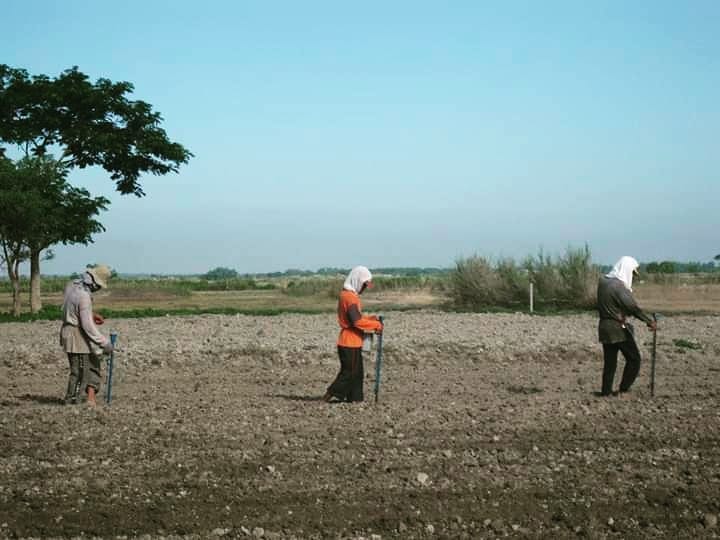
Minimum wage earners in five regions earned less than P300 a day in January 2023, and less than P310 in 2024, after inflation.
By MAVIC CONDE
Bulatlat.com
ALBAY — Have you ever wondered what your real wage is, or the actual value of your daily basic pay, after taking inflation into account?
Bulatlat collected data on real wages from January 2023 to June 2024 in time for President Marcos’ third State of the Nation Address (SONA), using BusinessWorld reports that show how basic pay rates across the country compare to inflation, or the rate at which prices rise over time.
Bottom five regions:
Bangsamoro Autonomous Region in Muslim Mindanao (BARMM), Caraga (Region XIII), MIMAROPA (Region IV-B), Bicol (Region V), and Zamboanga Peninsula (Region IX) have consistently had the lowest real wages.
The minimum rates in these five regions are the lowest in the country. In 2023, the minimum wage in BARMM is P341, P350 pesos in CARAGA, P351 in Zamboanga Peninsula, P355 pesos in MIMAROPA, and P365 in Bicol.
All five regions have minimum wage rates below P370, which, after inflation, have an actual value of less than P300.
Lowest real wage
MIMAROPA’s inflation rate of 8.9 percent in January 2023 is among the top five highest, resulting in P281.3 real wage, the lowest in that period.
Minimum-wage workers in BARMM earned the lowest real wage of P286.05 in June 2024 after 5.3 percent inflation.
All five regions have experienced inflation rates between seven to eight percent in January 2023.
Insignificant wage hike
The minimum wage in the five regions increased by P20 to P40 in June 2024, but these are almost breakeven, as they only saw a six to 11-percent increase.
According to think tank IBON Foundation, in June 2024, the average P442 wage rate in the country fell short of P768 to meet the average family living wage of P1,210 for five people. In the same report, BARMM has the largest wage gap at P1,692 with the current minimum wage of P361, as its family living wage for five must be P2,053.
BARMM requires a 23-percent wage increase, or P81, to match the country’s average rate. To meet the P2,053 family living wage for five, the region must close the gap with a 470-percent increase.
While BARMM’s poverty incidence fell by 38 percent between 2018 and 2023, it still has the highest number of poor families in the country. Ilocos (Region I) has the highest increase, at 63.22 percent. Bicol, which ranks fourth, has more poor families, with a 26-percent increase.
Unsurprisingly, the wage gap affects all regions, not just BARMM. According to IBON, even the recent P35 wage hike in NCR leaves a P580 gap for a family of five.
The situation is worse for those in agriculture and retail and service sectors.
PSA Data show that poverty incidence in 2021 is at 13 percent, or 3.5 million poor families, compared to the 2023 poverty incidence of 16.4 percent, or 4.51 million poor families.
One way to address the country’s employment vulnerabilities, according to National Economic and Development Authority (NEDA) Secretary Arsenio Balisacan, is to prioritize “high-quality jobs amid a fast-changing work environment.”
Balisacan reported that the country’s unemployment rate fell from 4.3 to 4.1 percent in the same month last year.
He attributed the growth, among others, in the construction and manufacturing subsectors, where the majority of employees are paid minimum wage and on a contractual basis, if not considered unsecured because temporary and without benefits.
For the IBON Foundation, this means developing a production-oriented national economy, as well as having an independent foreign policy, both of which have been missing from the countries’ national development plans. Its worsening oligarchic and dynastic politics contribute to its underdeveloped economy for these prioritize populist measures while decimating political-labor rights, according to IBON.
Rice prices still rise
The cost of basic goods continues to rise, despite lower inflation. Rice, a staple food in Filipino meals three times a day, now costs more than last year, with the highest increase at five percent for local special rice, from the average P57.8 in August 2023 to P60.7 in June 2024. Imported regular milled rice has increased by 15 percent, from P43 to P49.54.
In December 2022, regular milled rice costs P39.23 in NCR but in June 2024 it is at P46.29. Marcos stated last year, as reported by Rappler, that this is a problem in the NCR but not in the regions.
However, government data for June 2024 show that regular milled rice is even more expensive in the regions, costing more than the average price of P51.31 in Central Luzon, CALABARZON, Bicol, Central, Eastern, and Western Visayas, Zamboanga Peninsula, Northern Mindanao, Davao Region, Caraga, and BARMM. Except for Cagayan Valley, the rest of the regions have below-average prices that are still higher than the NCR’s. (DAA, RVO) ![]()
Author’s note:
- In the course of her research, Bulatlat correspondent Mavic Conde used the following methodology
Downloaded all Business World reports on real wages from January 2023 to June 2024. (Business World has been informed via email.) - Manually encoded the data in Google Sheet.
- Double-checked to ensure that the encoded data matched the downloaded data.
- Data analysis.
- The same steps were taken to analyze the average prices of goods and commodities from August 2023 to June 2024, using the Department of Agriculture’s weekly average price of selected agri-fishery commodities in Metro Manila markets.
- PSA’s price situationers for 2022-2024 were also used in the data analysis because they include regional retail prices.





